JArchitect v2020.1
Dependency Graph Completely Rebuilt
- New navigation system:
- Expand/Collapse parent elements
- Search elements in graphs by name
- Call graph / Coupling graph / Inheritance graph ... generated with a single-click
- Center selected elements
- Undo / Redo
- Graph can be saved / loaded as a list of actions (and not as a list of nodes) so it gets refreshed when code changes.
- New layout options:
- Group-By Assemblies, Namespaces, Types, Clusters
- Filters to show or hide: third-party assemblies, code generated, non-public elements.
- Box size proportional to element size, Edge width proportional to coupling strength
- Color conventions instantly identify caller/callee elements
- Complex graph simplified with Clusters
- Export to SVG vector format or PNG bitmap format.
- The graph shown in reports has been improved with the new Cluster feature.
Dependency Graph scales on very large Application
The architecture of large applications can be explored and navigated live.
The short GIF below shows a graph made of 15,000+ classes with a zoom on System.String and then System.Dictionary
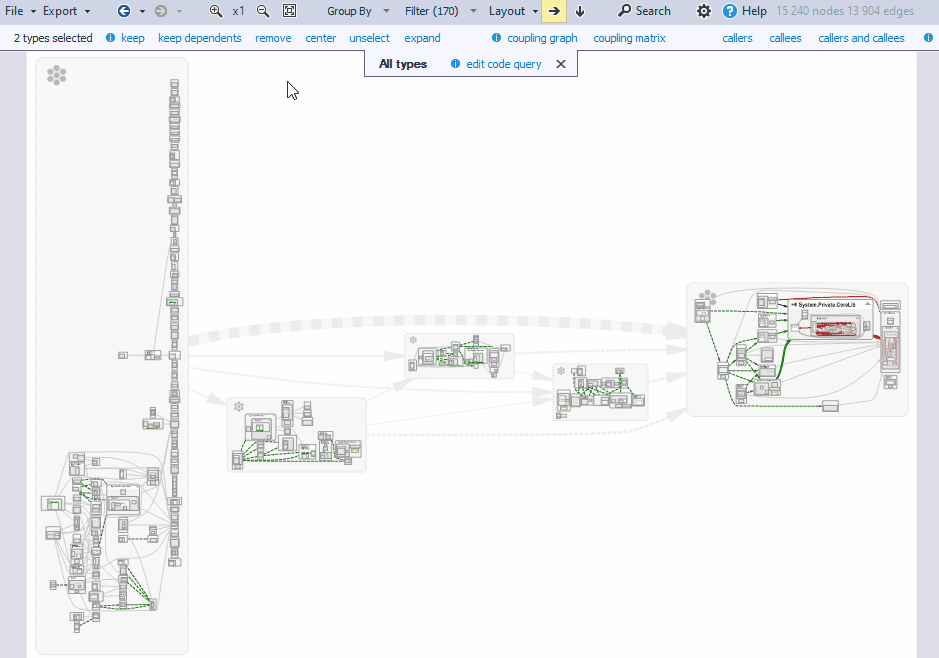
Obtain a Coupling Graph with a single-click
Click an edge between 2 elements then click one of the links coupling graph.
A graph made of children elements involved in the coupling is shown, for example all classes involved in the dependency between two projects.
In the background a code query is generated to match elements shown within the coupling graph.
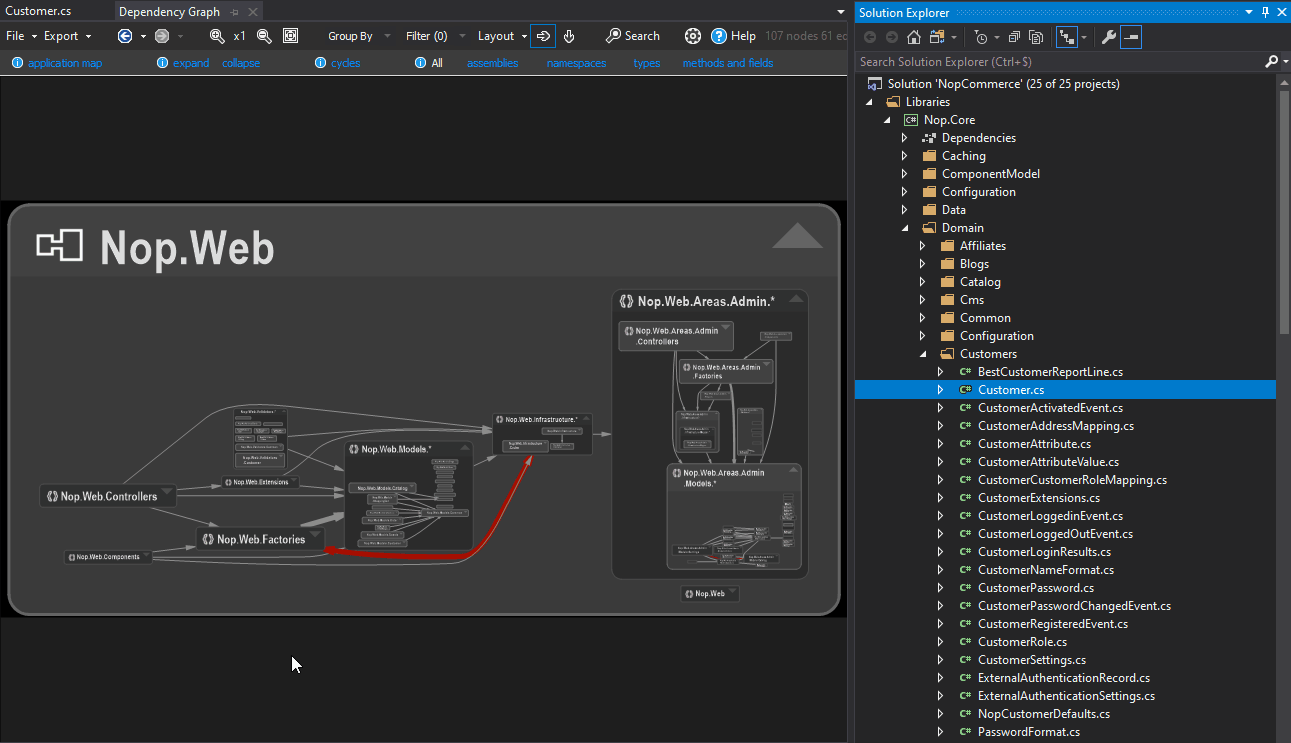
Graph of Changes since Baseline
If a baseline is available the changes map link opens the search panel to search classes, methods and fields added or modified since the baseline and exports these elements to the graph.
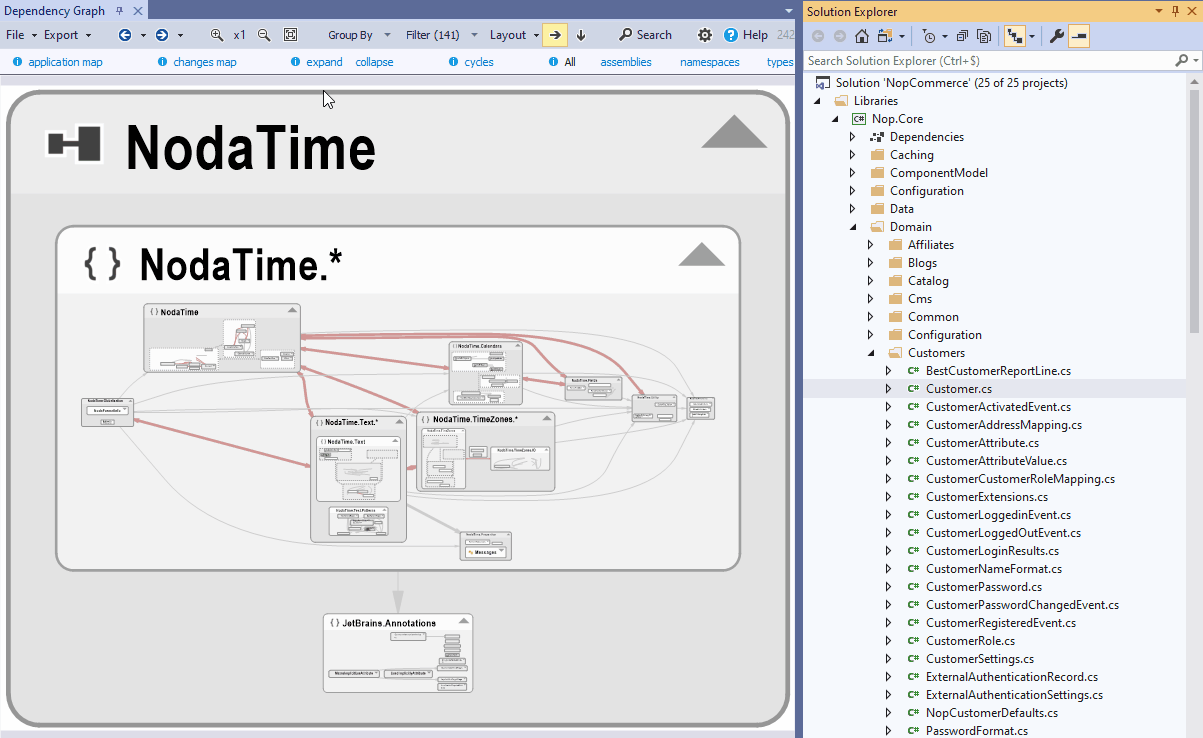
Source File Store Out Of The Box
- Parsed source files are now zipped at analysis time. This behavior is out of the box and transparent for the user, no configuration needed.
- This enables comparison of source file modifications against baseline version.
- When opening a source file declaration, if the source file is not found locally it is fetched from the analysis result zip store.
Code Diffs are now Easier to Browse
- When editing a query or a rule that relies on diff, double-clicking a code element changed since the baseline has for effect to compare its older and newer source. This makes diff review session easier.
- New menu JArchitect Code Diff since Baseline now opens the Search Code Elements by Change panel. The result can be easily browsed since code elements are now expanded until the type level. Also double clicking any changed element now opens sources diff.
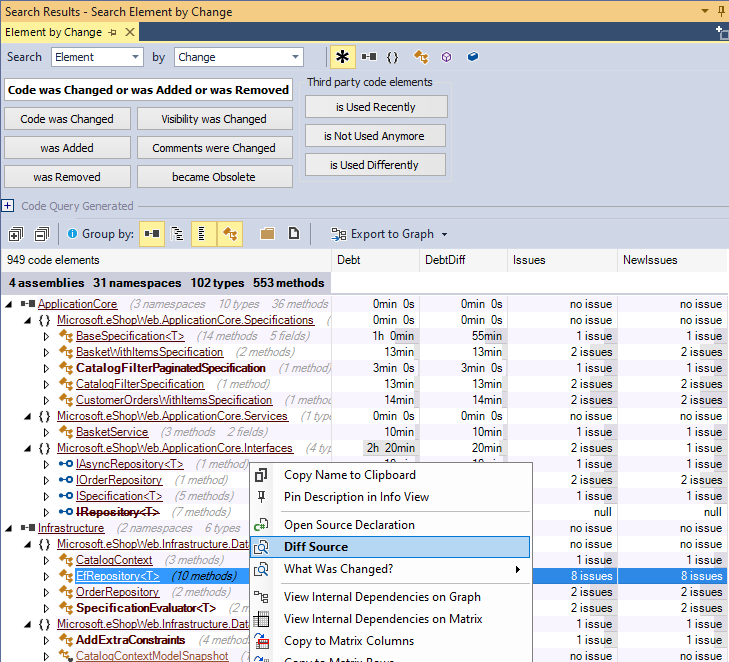
Bamboo and AppVeyor Integration
JArchitect can be now integrated to Bamboo and AppVeyor.
Search in Graph
Search for elements by name on large graphs consisting of hundreds or thousands of elements in real-time.
Keep or remove matched elements.
Regex supported.
The short GIF below searches all namespaces whose names contain the string customer, selects them and then expands them to show all their children classes.
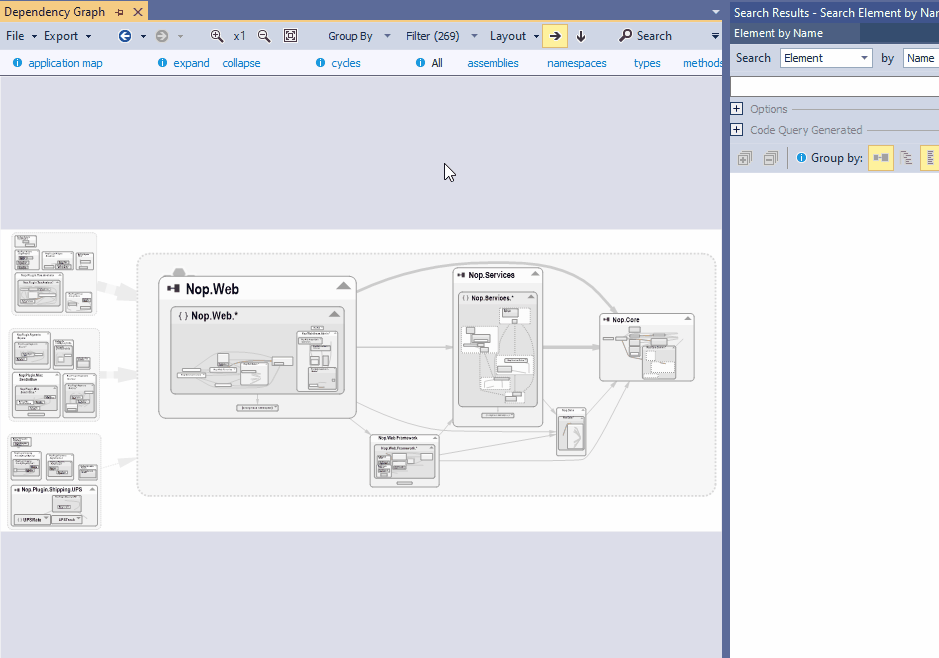
Obtain a Call Graph with a single-click
Click a code element to select it and then click one of the links: callers and callees, callers or callees
Use a combo-box to select the call depth. A call depth value N greater than one means that elements calling elements ... (N times) ...calling the element(s) selected are shown.
A call graph can be obtained from several elements selected.
In the background a code query is generated to match elements shown within the call graph.
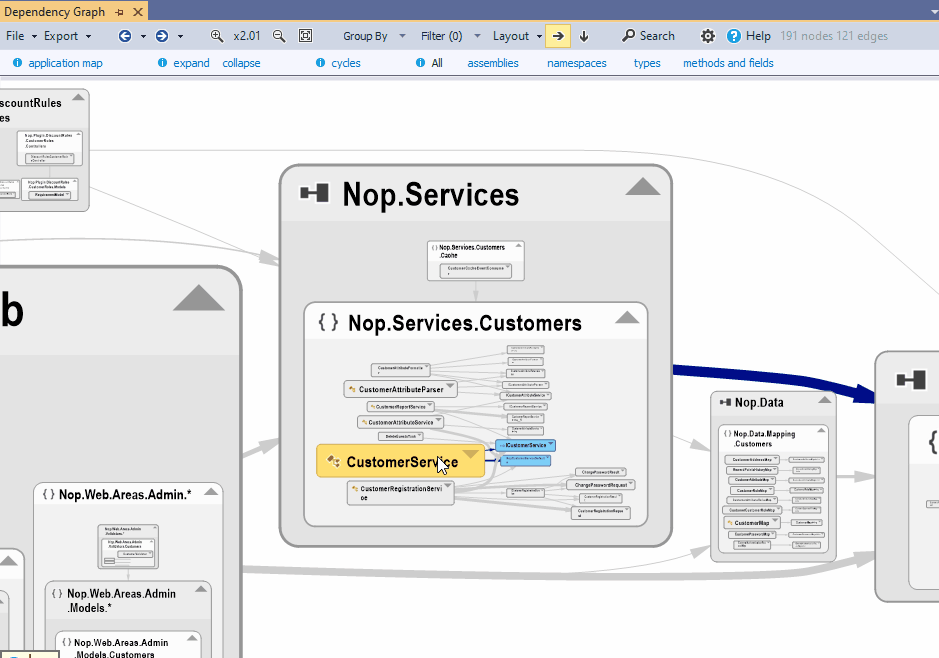
Color Conventions to Highlight Dependents
Dependents of the selected elements and related edges, are instantly highlighted. This also works for the hovered element if no selection.
- Green for direct callers, dark-green for callers of callers (recursive).
- Blue for direct callees, dark-blue for callees of callees (recursive).
- Red for mutual dependents, dark-red for non-direct mutual dependents (recursive).
A help panel is shown by default to explain the color convention and can then be discarded
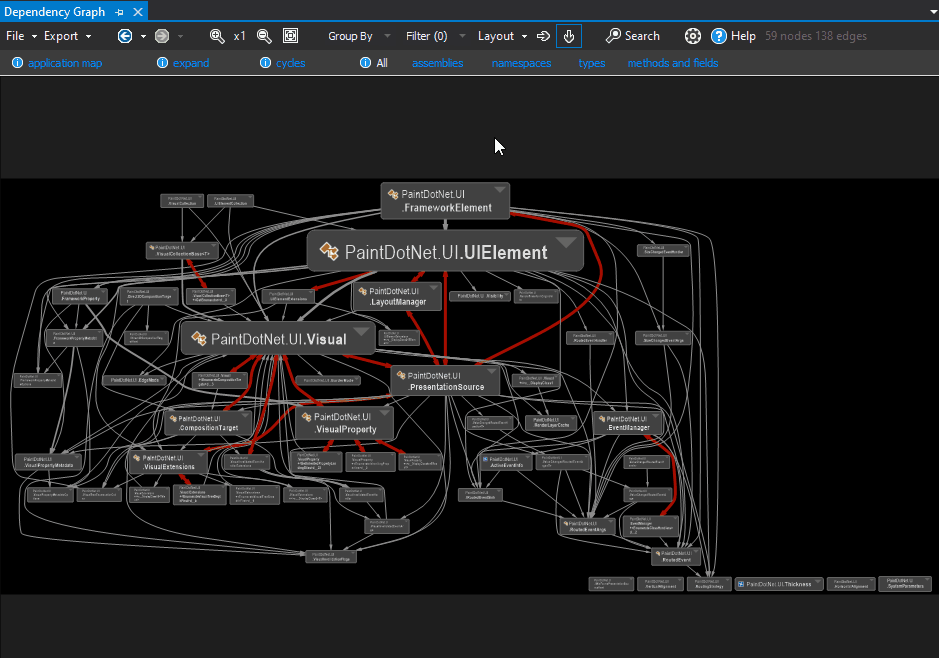
Export to SVG vector format or PNG bitmap format
Click the images below to open some SVG vector graph in your browser.
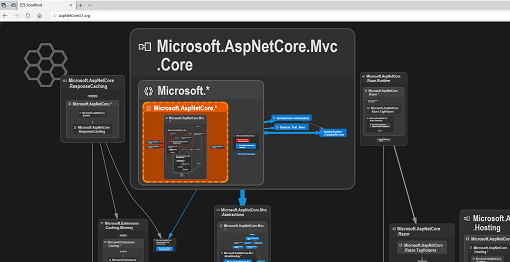
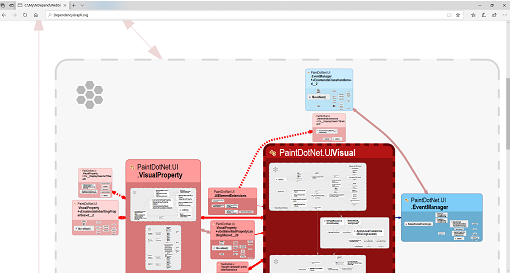
Graph of Entangled Code
The cycles link edits a code query that matches cycles between namespaces.
In the GIF below, a cycle of 30 namespaces is exported to the graph. These 30 namespaces all depend on each other and together they form a super-component.
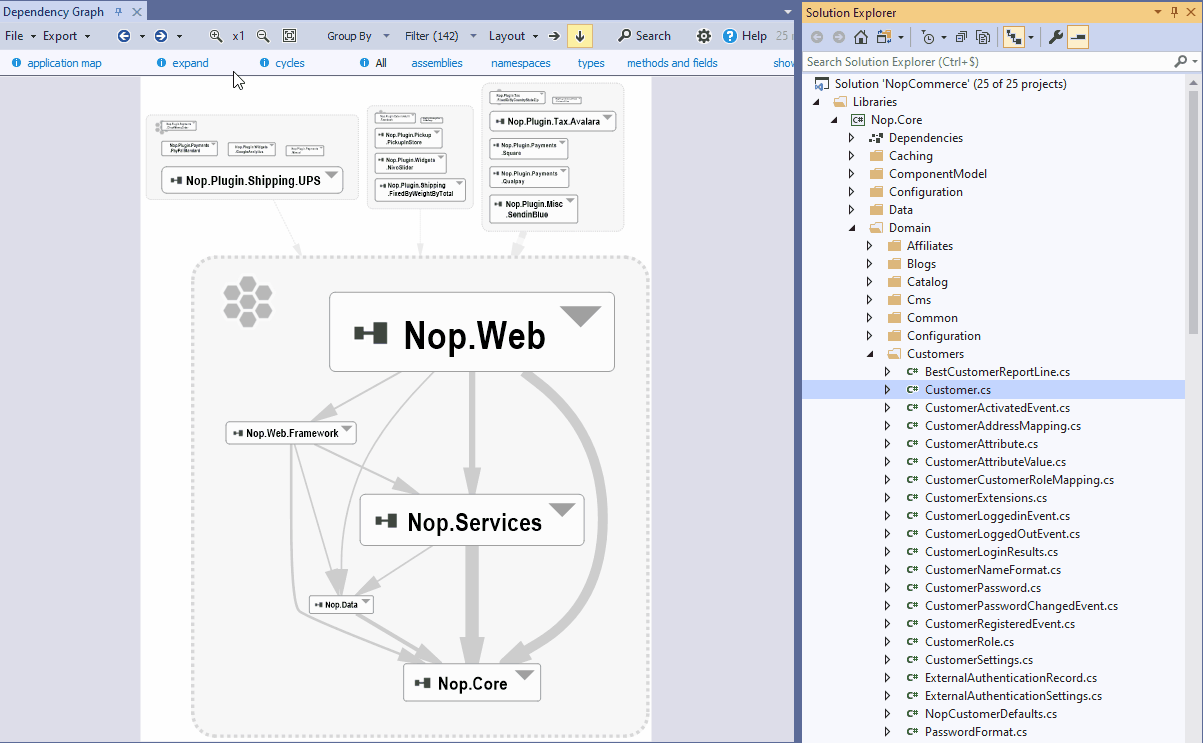
With CppDepend, software quality can be measured using Code Metrics, visualized using Graphs and Treemaps, and enforced using standard and custom Rules.
